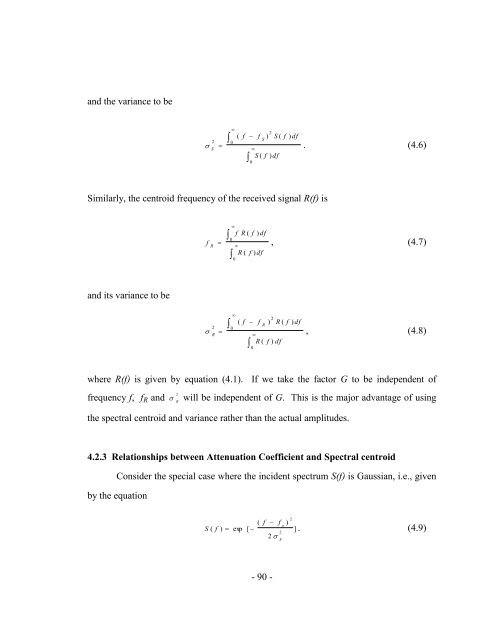My PhD Thesis, PDF 3MB - Stanford University
My PhD Thesis, PDF 3MB - Stanford University
My PhD Thesis, PDF 3MB - Stanford University
You also want an ePaper? Increase the reach of your titles
YUMPU automatically turns print PDFs into web optimized ePapers that Google loves.
and the variance to be<br />
2<br />
S<br />
<br />
<br />
<br />
0<br />
( f f S ) 2 S ( f ) df<br />
<br />
0<br />
<br />
S ( f ) df<br />
Similarly, the centroid frequency of the received signal R(f) is<br />
and its variance to be<br />
f R <br />
2<br />
R<br />
<br />
<br />
<br />
0<br />
<br />
<br />
<br />
0<br />
0<br />
<br />
f R ( f ) df<br />
R ( f ) df<br />
( f f R ) 2 R ( f ) df<br />
<br />
0<br />
<br />
R ( f ) df<br />
- 90 -<br />
. (4.6)<br />
, (4.7)<br />
, (4.8)<br />
where R(f) is given by equation (4.1). If we take the factor G to be independent of<br />
2<br />
frequency f, fR and will be independent of G. This is the major advantage of using<br />
R<br />
the spectral centroid and variance rather than the actual amplitudes.<br />
4.2.3 Relationships between Attenuation Coefficient and Spectral centroid<br />
Consider the special case where the incident spectrum S(f) is Gaussian, i.e., given<br />
by the equation<br />
S ( f ) exp [ ( f f o<br />
2 S<br />
) 2<br />
2 ] . (4.9)
















